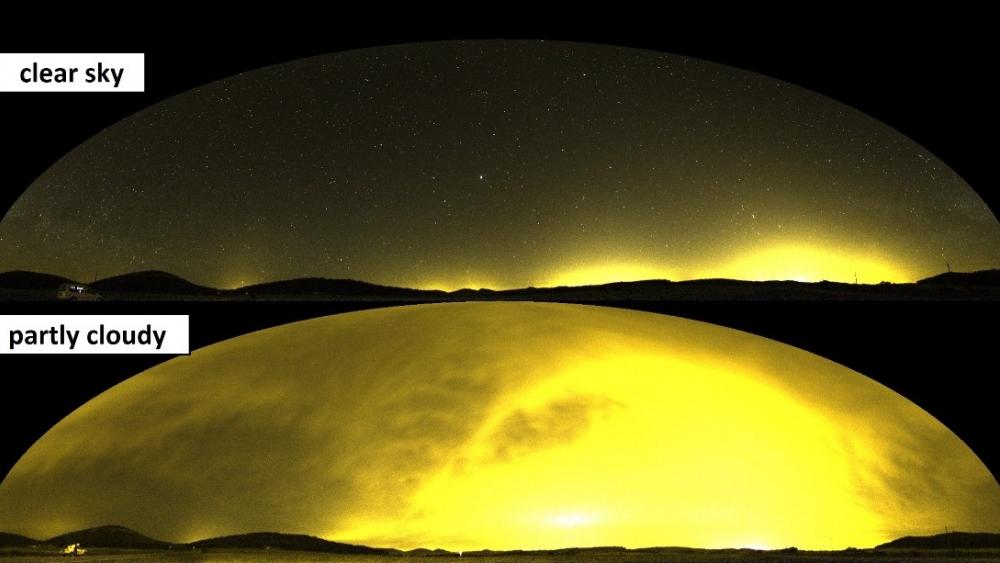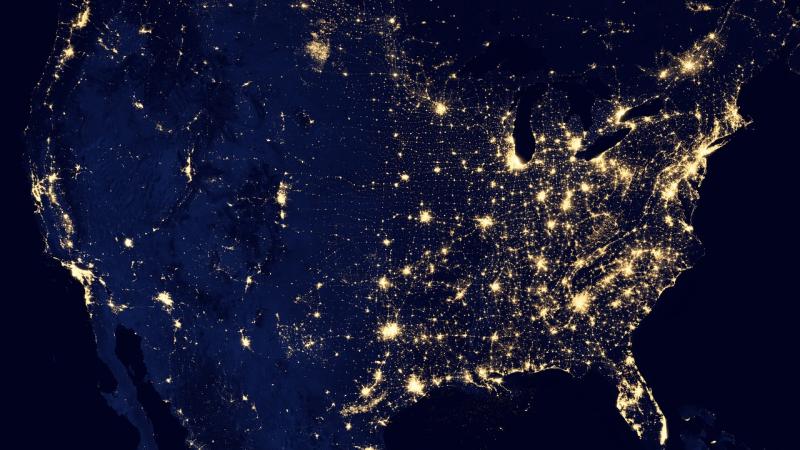
The distribution of light pollution over the entire sky. | Photo: Andreas Jechow / IGB
Previous studies of light pollution such as the "World Atlas" of night sky brightness have mainly focused on the sky directly overhead. With the latest measurements, the researchers found out that a sky directly overhead that is almost free from light pollution can nevertheless be quite bright at the horizon. The scientists investigated the night sky between the Parc Astronòmic Montsec in the north of Spain and the town of Balaguer, 27 kilometers away.

Image: Andreas Jechow / IGB
The measurements showed that on cloudy nights the entire sky above the astronomical park was actually as bright as a light-polluted, cloudless sky just five kilometers from the town center. Naturally, the cloudy sky far away from the town would have to be much darker, as the clouds shield the light from the moon and stars and consequently darken the sky. At a distance of 18 km from the town, the sky directly overhead was nearly indistinguishable from a sky with no light pollution. Considering the light from all directions, however, the sky was 66 percent brighter than a natural sky in a starry night. In cloudy conditions it was even 3.5 times brighter, as the clouds reflected the light from the ground - generated by the illumination of the nearby city. This is a lot of additional light for nocturnal species, which evolved in a time when clouds actually darkened the sky.
Innovation does not have to be expensive
For the measurements, the team used a simple and user-friendly imaging system, which is based on calibrated, commercially available cameras with a fish eye lens - an extreme wide angle lens. "We hope that this simple and relatively low-cost method will allow many researchers and citizen-scientists around the world to map the artificial skyglow under different weather conditions," explains Andreas Jechow, head of the study and physicist at the Leibniz Institute of Freshwater Ecology and Inland Fisheries (IGB) Berlin, the importance of the new measuring method.
To the study in the Open-Access-Journal Scientific Reports >
The study was supported by the projects STARS4ALL (financed by the European Union, H2020-ICT-2015-688135) and ILES (funded by the Leibniz Association, SAW-2015-IGB-1). It is based on the measurement campaigns of the European COST Action LoNNe (Loss of the Night Network), which are now being carried forward as part of the STARS4ALL project.





